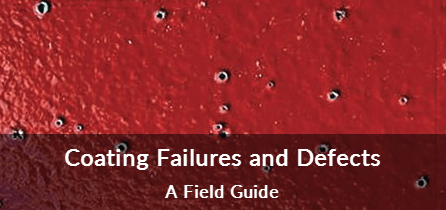What Does
Cathodic Disbondment Mean?
Cathodic disbondment is the loss of adhesion between a cathodic coating and its metal substrate due to the products of cathodic reduction reaction (corrosion reaction) that take place in the interface of coatings.
Cathodic protection (CP) systems are installed to prevent corrosion of metal. Disbondment of coating occurs when coatings in a cathodic protection system interact either chemically or physically, ultimately causing corrosion beneath the coat.
Free Coating Failures and Defects Guide – Sponsored by Fitz’s Atlas 2

Click here to download your free guide!
Corrosionpedia Explains Cathodic Disbondment
In CP systems, current passing through the metal can free hydrogen atoms, causing coating disbondment. This current passes only through metal coating a fault, and amount of the current flow depends on the size of the coating fault. If the size of the fault increases, the current forces the coating away from the metal, resulting in a voltage drop at the interface, causing cathodic disbondment. If there is no coating fault, then cathodic disbondment does not occur.
Cathodic disbondment performance is much more consistent at thicknesses over 200 µm; therefore, thicknesses less than 200 µm should be avoided in order to achieve good cathodic disbondment protection.
Factors affecting disbondment:
- Thickness
- Formulation of the product
- Cure percentage